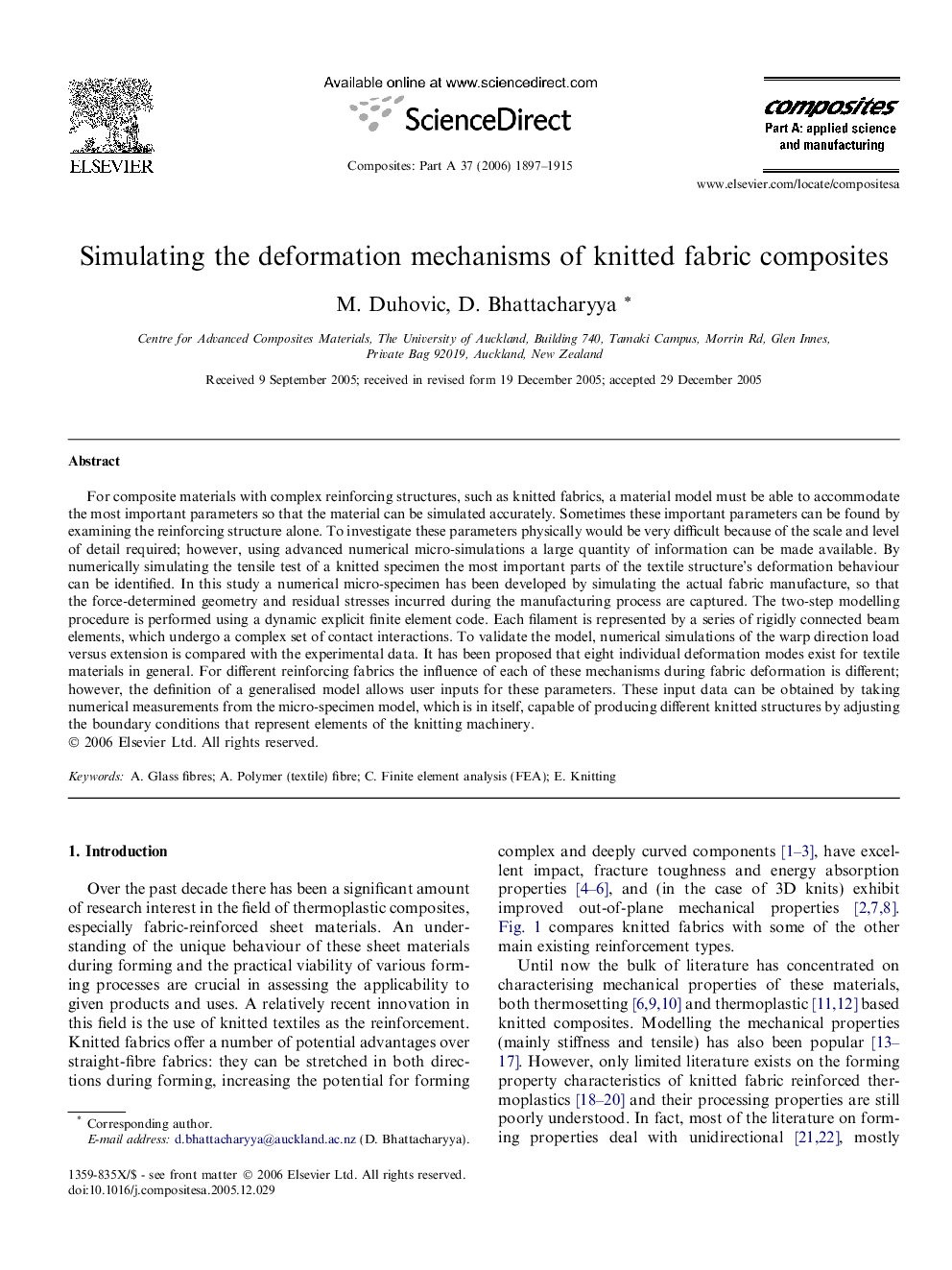| Article ID | Journal | Published Year | Pages | File Type |
|---|---|---|---|---|
| 1467822 | Composites Part A: Applied Science and Manufacturing | 2006 | 19 Pages |
For composite materials with complex reinforcing structures, such as knitted fabrics, a material model must be able to accommodate the most important parameters so that the material can be simulated accurately. Sometimes these important parameters can be found by examining the reinforcing structure alone. To investigate these parameters physically would be very difficult because of the scale and level of detail required; however, using advanced numerical micro-simulations a large quantity of information can be made available. By numerically simulating the tensile test of a knitted specimen the most important parts of the textile structure’s deformation behaviour can be identified. In this study a numerical micro-specimen has been developed by simulating the actual fabric manufacture, so that the force-determined geometry and residual stresses incurred during the manufacturing process are captured. The two-step modelling procedure is performed using a dynamic explicit finite element code. Each filament is represented by a series of rigidly connected beam elements, which undergo a complex set of contact interactions. To validate the model, numerical simulations of the warp direction load versus extension is compared with the experimental data. It has been proposed that eight individual deformation modes exist for textile materials in general. For different reinforcing fabrics the influence of each of these mechanisms during fabric deformation is different; however, the definition of a generalised model allows user inputs for these parameters. These input data can be obtained by taking numerical measurements from the micro-specimen model, which is in itself, capable of producing different knitted structures by adjusting the boundary conditions that represent elements of the knitting machinery.
